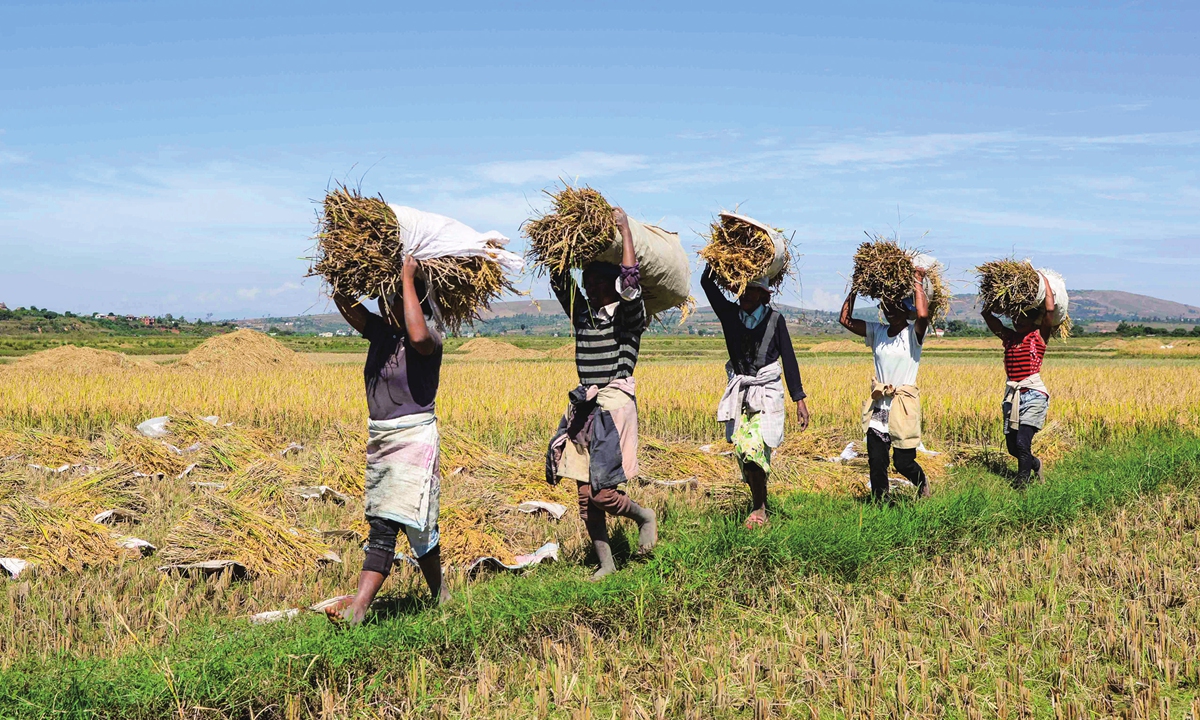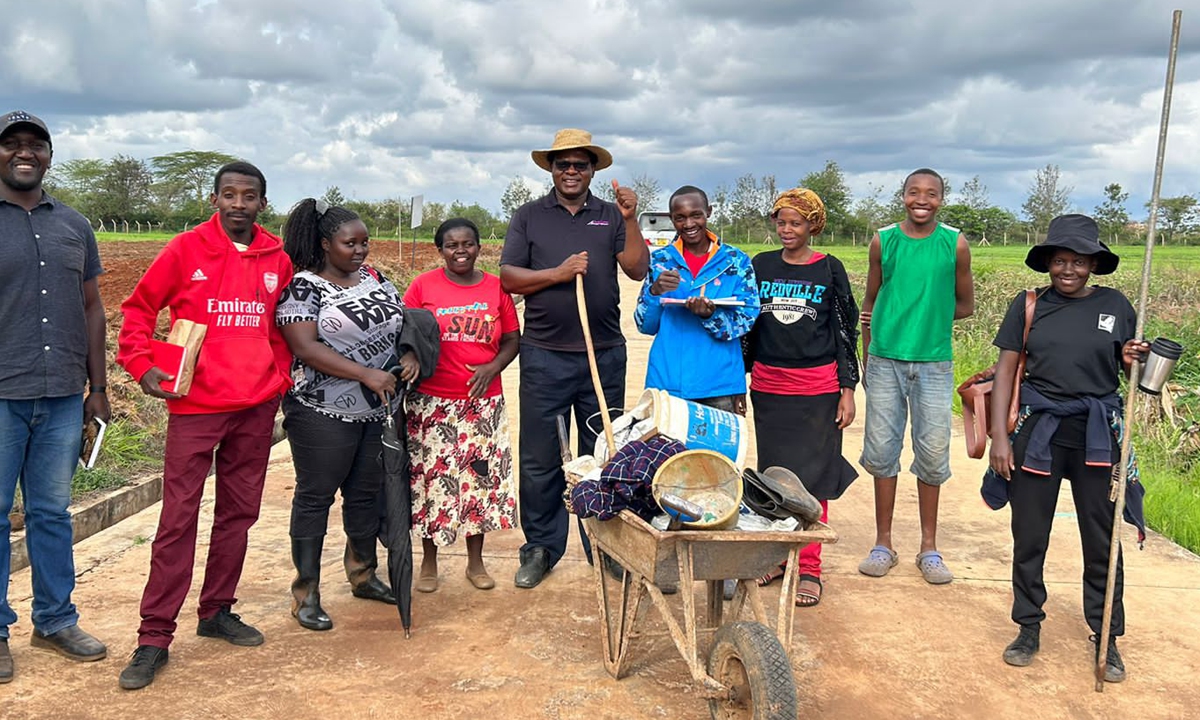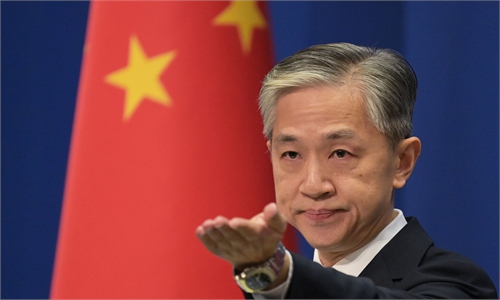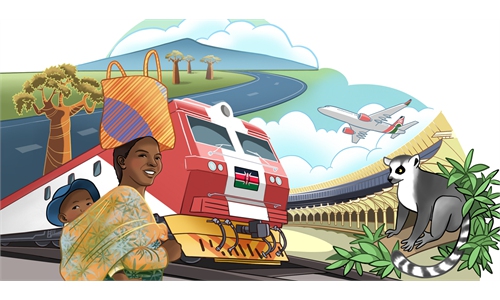China, Africa deepen agricultural cooperation to boost continent's food security

Local farms harvest crops at the hybrid rice land in Mahitsy, a town nearby Madagascar's capital Antananarivo on May 12, 2023. Photo: Xinhua
As cool and pleasant breezes blow toward the central plateau of Madagascar, it is a signal that the rainy season is over, and it is time to harvest the crops.
Like southern China, Malagasy populations use rice as the staple food, and rice cultivation has a long history. However, due to the lack of high-quality rice seeds and mature planting techniques, Madagascar's rice production cannot fully meet the needs of local people.
China and Madagascar have carried out technical cooperation on hybrid rice varieties since 2007. More than 20 agricultural experts from Central China's Hunan Province have successively walked across the land, helping the local people to realize their dream of food self-sufficiency with hybrid rice seeds from China.
Transported thousands of kilometers from China, the seeds embody the efforts of Chinese technicians to pass on China's advanced practices, technology and experience to Africa to cope with food security issues.
Madagascar is only part of the big picture that the Chinese government's agricultural cooperation with Africa for years. From Kenya to Uganda, China has been dedicating to the cause.
Africa is endowed with advantageous conditions for agricultural production. Agricultural modernization is an important underpinning for African countries to achieve independent and sustainable development.
China's advanced agricultural technology has gone abroad along with the Belt and Road Initiative, making a huge contribution to maintaining world food security and playing an important role in increasing African farmers' incomes and agricultural efficiency.
At the same time, agricultural development in Africa faces constraints such as a lack of funding, insufficient infrastructure and agricultural equipment, incomplete industrial and supply chains, and outdated methods.
China is ready to further explore new pathways of agricultural cooperation with Africa, and work with the international community to help Africa achieve the goals set out in the African Union's Agenda 2063 and Comprehensive African Agricultural Development Program to develop modern agriculture, the Foreign Ministry added.
Fruitful results
In one room of the family home of Dina, a farmer in Mahitsy, a town 35 kilometers northwest of Madagascar's capital Antananarivo, there are 800 kilograms of hybrid rice piling up. She harvested it in April from her 600-square-meter hybrid rice farm.
She started to grow hybrid rice seeds from China in 2017. She was worried at the beginning, because the seedlings were smaller than the local ones, but she was happy after the yield tripled.
"I am so thankful for the Chinese government's help in our farming, especially those Chinese experts," the 44-year-old woman told the Global Times.
The technicians who she mentioned are from China, and Hu Yuefang is one of them.
Hu, from the Hunan Academy of Agricultural Sciences, arrived in 2008, one year after China and Madagascar launched a cooperation project on growing hybrid rice, and he has worked there ever since, conquering many difficulties.
To better teach rice-planting techniques, Hu has notebooks written in the local language and transcribed into Chinese characters. His team even made a special textbook for the newcomers to learn the language. There was no electricity or drinkable water, so Hu and his team lit candles and dug a well.
The difficulties in life were nothing, but what was even more frustrating is that the local people did not trust the hybrid rice from China at the beginning, and they preferred to use their original seeds and methods to cultivate the land, Hu said.
To win their trust, Hu said his team even in 2016 took a competition with Madagascar, France, Japan, and US to see which country had the highest hybrid rice yield.
"Finally, we won, for our yield was nine to ten tons per hectare, the highest," he said.
Due to the lack of high-quality seeds and artificial management, the local rice yield was extremely low, with an average of less than five tons per hectare. To find the hybrid rice varieties most suited to local conditions, Hu and his team visited almost all of the rice-growing areas of the island country.
In 2012, three varieties were finally selected and approved by the Madagascar government. These were the first hybrid rice varieties successfully bred in Africa by China and approved by the local government.
Before the 1970s, Madagascar was a rice-exporting country, and its products were mainly supplied to neighboring countries. However, the level of rice planting declined seriously, the unit output continued to decrease, and the food gap continued to expand. Finally, it became a rice-importing country, Andriamanalina Raharinjatove Fenomanantsoa, director general of Agriculture of Madagascar, told the Global Times.
"We believe that agricultural technology from China can help us increase food production and become a food exporter again," he added.
He revealed that at the beginning, the planting of Chinese hybrid rice in Madagascar didn't get good results, and it was found that the effect was compromised because it takes a long time to import seeds from China. To solve this problem, Chinese companies established breeding bases in Madagascar to realize the localization of seed production.
The cumulative promotion area of Chinese hybrid rice in Madagascar has reached more than 50,000 hectares, with an average yield of about 7.5 tons per hectare, according to Hu.
The China National Hybrid Rice Research and Development Center officially opened its African sub-center in Madagascar in May 2019.
Expanding efforts
On Madagascar's 20,000-ariary denomination banknote, a plump hybrid rice plant is shown to commemorate the contribution of hybrid rice to the country's food security.
More than 20 African countries are planting hybrid rice, and China continues to provide agricultural technical support to countries and regions in need, helping countries strengthen agricultural capacity building related to hybrid rice.
Chinese experts have been working in Uganda, sharing their experience with local farmers on how to boost production and promote an agricultural transformation.
As early as the mid-1970s, China sent a team of agricultural experts to expand the irrigation area and introduced rice to Uganda, gradually turning the Butaleja region into a rice paddy town.
Since the implementation of the China-FAO-Uganda South-South Cooperation Project in 2012, the Chinese expert team has introduced hybrid rice into the region to further promote the rice industry, and it continues to promote new crop varieties such as foxtail millet and sorghum from China.
During the implementation of the project, Chinese experts faced life challenges such as malaria and water and electricity outages. They also needed to face problems such as poor land fertility, few good varieties of crops, backward production technologies and a lack of farming equipment.
According to Zhang Xiaoqiang, head of Chinese agriculture team, the project has achieved phased results.
Significant progress has been made in new crop varieties, such as a project that carried out field trials of nearly 30 varieties of crops such as rice, millet, sorghum and pepper; and established 10 demonstration projects for high-yield cultivation of hybrid rice and foxtail millet with an area of 200 acres (80 hectares).
Foxtail millet has been promoted on a large scale of nearly 5,000 acres (2,023 hectares), involving nearly 1,000 farmers, providing employment for more than 2,500 people.
"China-Uganda agricultural cooperation teaches a man to fish, rather than giving him fish," Zhang told the Global Times.
Through hands-on technology transfer, local farmers are helped to adopt new varieties and master new technologies, while improving agricultural output and production capacity, Zhang added.

Sylvester Anami (center), a senior research fellow at the Jomo Kenyatta University of Agriculture and Technology, evaluates sweet sorghum hybrids with farmers in Kakamega, Kenya in February. Photo: Courtesy of Sylvester Anami
China's experience
At the just-concluded China-Africa Leaders' Dialogue held in Johannesburg, Chinese President Xi Jinping said China will launch the Plan for China Supporting Africa's Agricultural Modernization, adding that China will help Africa expand grain planting and encourage Chinese companies to increase agricultural investment in Africa.
The plan aims to help Africa achieve food self-sufficiency and independent sustainable development, promote food production in Africa, effectively boost Africa's ability to safeguard its food security, and help it reach related goals in agricultural modernization.
During the interviews, local officials and experts had much to say about China's experience. Learning Chinese technology and experience from the agricultural cooperation projects provided by China, and looking for new opportunities to change their destinies and realize their personal development goals, were exactly what many Africans are striving for.
The impressive rural transformation and agricultural modernization in China, which involved the utilization of precision agriculture and the implementation of lean and digital technologies, has resulted in the lifting of millions from absolute poverty.
The continuous provision of technical support and expertise in agricultural modernization by China has the potential to bring about a revolution in food and nutrition security in Africa, Dr. Sylvester Anami, a senior research fellow at the Jomo Kenyatta University of Agriculture and Technology in Kenya, told the Global Times.
The institute he works is cooperating with the Institute of Botany and Sino-Africa Joint Research Center under the Chinese Academy of Sciences in breeding, cultivating and promoting sweet sorghum hybrids in sub-Saharan Africa.
In the view of Anami, the agricultural progress of Kenya faces many challenges, including but not limited to, the prevalence of diseases and pests, enduring droughts, losses post-harvest, inequitable distribution of resources, climate-related limitations, inadequate infrastructure, insufficiency in technology to cope with diverse economic and ecological circumstances, intensifying competition within markets, and inadequate compensation.
In addition, he told the Global Times that "the soil health is suboptimal. We lack access to improved, high-quality seeds. Our water management skills are inadequate, and there is a conspicuous absence of extension services."
China has the potential to enhance the abilities of both our farmers and students in cutting-edge technologies, and broaden beneficial partnerships with scientists, higher education institutions, government research institutes, and governments in Africa, by sharing knowledge and extensive experience in agricultural transformation, he said.
Furthermore, China could broaden their mutually beneficial partnerships with scientists, higher education institutions, government research institutes, and governments in Africa, by sharing knowledge and extensive experience in agricultural transformation, he said.
Wang Dong contributed to the story





